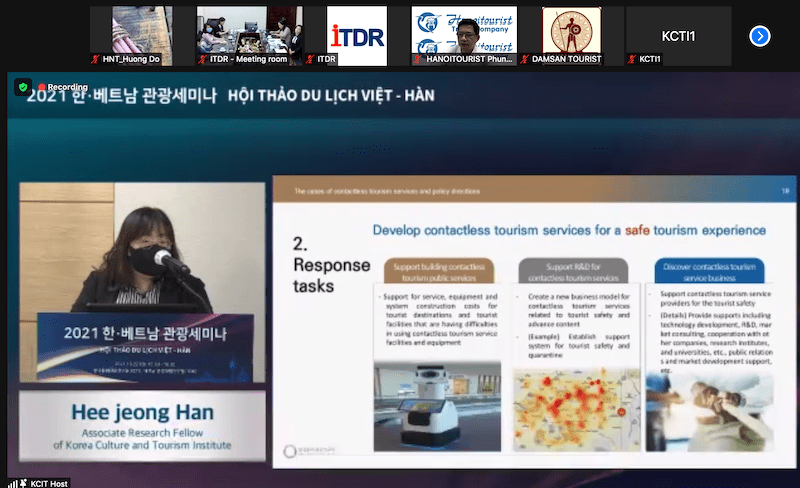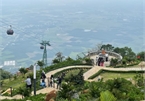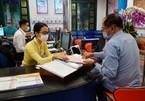
Promoting a contactless service model after the Covid-19 pandemic is one of the initiatives for the recovery of the tourism industry in the near future.
In the context of safely adapting to the new normalcy, Heejeong Han, Associate Research Fellow of Korea Culture and Tourism Institute (KCTI), said the contactless model focused on ensuring the safety of tourists, then stimulating the demand of travelling in the post-Covid-19 period.
The contactless model will provide information to ensure the safety of guests and update the safety status of the destinations in real-time, she told the online conference “Safety for tourists during the pandemic - Recovery tourism industry after the outbreak of Covid-19”. The conference was jointly held by the KCTI and the Institute for Tourism Development Research (ITDR) under the Vietnam National Tourism Administration (VNAT) on October 22.
Using technologies like AI will help connect service providers and tourists, create new services for customers, then increase their travel experiences,” Hee Jeong Han said.
Sharing about recovery policies after Covid-19 at the conference, Dr. Hyunju Kim, KCTI's research fellow, said that at the beginning of November, tourism activities in South Korea will be restored and policies applied to prepare for this reopening.
The South Korean authority is monitoring indicators about its recovery to accurately assess the effects of the pandemic on the smokeless industry.
As global tourism is frozen due to the border closure to prevent the pandemic, South Korea's tourism is also strongly affected. The number of international visitors to South Korea in 2021 decreased by 95% compared to 2019 while the figure for domestic ones also fell by 50%.
The South Korean research fellow said they need to build a new growth strategy based on new developments and have preparations to respond to any issues arising during the process of implementing these new growth policies.
“The tourism industry needs to meet requirements for digitalization and climate change that have arisen during the pandemic period,” she said.
Delegates at the conference pointed out some South Korean experiences in adapting tourism to the new situation including focusing on digitization and innovation, increasing the competitiveness of the industry through finding and developing new business models, and enhancing the traveler’s experience for the outbound segment.
In order to resume tourism activities, the country has also built a policy system based on its strengths such as the Korean wave.
The industry also needs to pay attention to local tourism, promoting its strengths such as attractive destinations and competitive services. To do this, the government should encourage localities to develop human resources, and build policies based on conditions of the locality, according to Dr. Kim.
Sharing his comments about the directions of the South Korean policies, Director of the VNAT's Institute of Tourism Development Research Nguyen Anh Tuan said: “Through the conference, there were useful models and suggestions that will help us get ideas for developing research plans for the revival of the tourism industry.”
Vietnamese tourism managers and businesses can also find out solutions to deploy activities effectively, especially when Vietnam will welcome international tourists on a trial basis for restoring the tourism industry.
On the South Korean side, KCTI’s President Kim Dea Kwan said that the organization of the seminar marked the cooperation between the South Korean and Vietnamese tourism research institutes, which was also evidence of the bilateral cooperation between the two sides and the two countries.
“I hope the Covid-19 pandemic will be soon over so that the relationship between the two sides in the field of tourism can be rebuilt and developed to a new height,” he underlined.
Thang added, in the coming time, the Government of Vietnam will strengthen the cooperation relationship more closely through policies and strategies to boost the development of the tourism industry between the two countries.
In the latest move, Vietnam’s authority will allow five localities of Kien Giang, Khanh Hoa, Quang Nam, Danang, and Quang Ninh to welcome international tourists in November, which is the first of the two-phase pilot scheme for reopening tourism. The pilot will be conducted according to closed packages including charter flights, selected accommodation establishments, and routes.
The second phase will start from January 2022, expanding inbound activities in other localities where the vaccination plan and the Covid-19 situation are well done.
The Vietnamese Ministry of Culture, Sports and Tourism is expected to welcome international visitors from the third quarter of 2022.
Source: hanoitimes

HCM City kickstarts domestic travel with closed tours to safe destinations
The HCM City tourism sector has co-operated with travel firms and destinations in the city to promote online booking and payment solutions.

Ho Chi Minh City officially reopens to tourists
Ho Chi Minh City has officially reopened to welcome back tourists, with the local market set to play a key role in connecting localities whilst developing inter-regional routes and safe destinations under its tourism recovery roadmap.